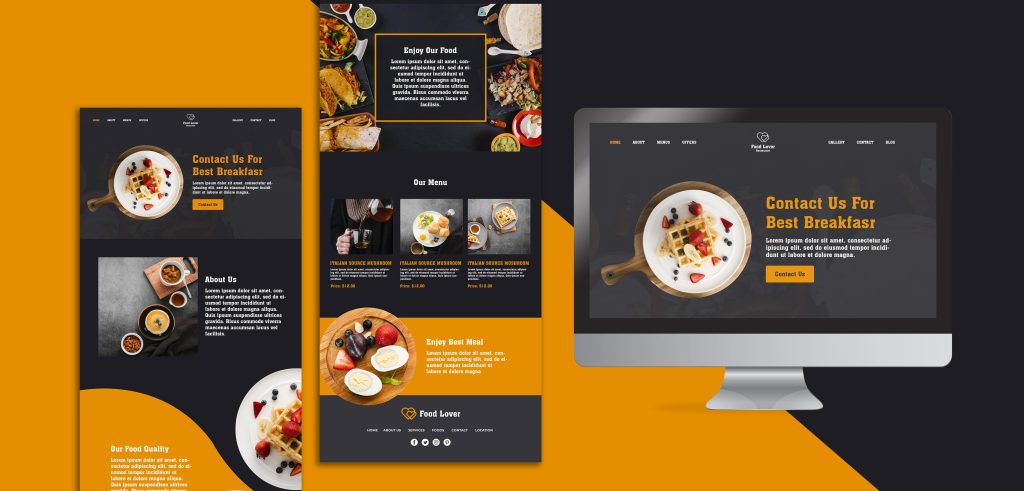Best Practices for Designing High-Converting Landing Pages

A landing page is more than just a place for visitors to “land” — it’s a powerful marketing tool designed to convert visitors into leads, customers, or subscribers.
But not every landing page succeeds.
To truly create a high-converting landing page, you need to follow proven design strategies and psychological triggers that guide users toward taking action.
In this article, we’ll walk you through the best practices for building landing pages that consistently deliver higher conversion rates and stronger business results.
What is a Landing Page?
A landing page is a standalone web page created specifically for a marketing or advertising campaign.
It’s where a visitor “lands” after clicking on a link from an email, ad, social media post, or other digital channel.
Unlike a homepage or a blog post, a landing page is designed with a single focused goal — usually a call to action (CTA) like:
Signing up for a newsletter
Downloading an eBook
Booking a consultation
Making a purchase
Why Landing Page Design Matters
The design of your landing page can either encourage visitors to take action or cause them to leave without converting.
Great design isn’t just about making the page look good; it’s about making it effective.
Best Practices for Designing High-Converting Landing Pages
Here’s exactly what you should do:
1. Craft a Clear and Compelling Headline
Your headline is the first thing visitors see — it must immediately grab attention and clearly explain the value of your offer.
Tips:
Focus on benefits, not features.
Keep it short, powerful, and clear.
Use action-oriented language.
Example:
Instead of “Get Our eBook,” write “Learn How to Grow Your Business 3X Faster — Free eBook!”
2. Keep the Design Simple and Focused
Clutter kills conversions.
Every element on the page should support the main goal — no distractions allowed.
Tips:
Use lots of white space.
Stick to 1-2 primary colors.
Highlight the CTA prominently.
Avoid too many links or menus.
3. Use Strong Visual Hierarchy
Guide your visitors’ eyes naturally through the content.
People scan pages, so layout matters!
Tips:
Make the headline large and bold.
Use subheadings to break up sections.
Use contrasting colors for CTA buttons.
Place the most important information “above the fold.”
4. Write Persuasive and Benefit-Driven Copy
The words on your landing page must sell the action you want visitors to take.
Tips:
Focus on benefits, not technical features.
Use short paragraphs and bullet points.
Include emotional triggers (fear of missing out, excitement, trust).
Make the CTA copy irresistible (“Get Started Now” vs “Submit”).
5. Use High-Quality Images or Videos
Visual content can significantly boost engagement and trust.
Tips:
Use real images instead of stock photos when possible.
Add a short, engaging explainer video to increase conversions.
Show the product in action or real customer results.
6. Include Trust Signals
People won’t convert unless they trust you.
Adding credibility elements makes visitors feel safe.
Tips:
Add testimonials and reviews.
Showcase logos of past clients.
Add security badges if collecting sensitive info.
Mention any money-back guarantees.
7. Optimize Your Call to Action (CTA)
Your CTA is the most important part of the landing page.
It must stand out visually and emotionally.
Tips:
Use action words (e.g., “Start Now,” “Get My Free Guide,” “Book a Call”).
Make the button color contrast with the background.
Keep the CTA visible without needing to scroll.
8. Make It Mobile-Responsive
More than 60% of visitors might view your page on a mobile device.
If it’s not optimized, you’ll lose conversions fast.
Tips:
Use mobile-friendly fonts and button sizes.
Ensure fast loading times.
Stack content vertically for easier scrolling.
9. Use A/B Testing
Even the best landing pages can improve.
Test different versions of headlines, images, CTAs, and layouts to see what performs better.
Tips:
Test only one element at a time.
Let the test run long enough for reliable data.
Implement changes based on results.
10. Speed Matters — Optimize Page Load Time
If your landing page loads slowly, users will leave before they even see your offer.
Tips:
Compress images without losing quality.
Use lightweight code and minimal plugins.
Choose a fast, reliable hosting service.
Final Thoughts
Designing a high-converting landing page isn’t about being flashy — it’s about being focused, user-centered, and strategic.
By following these best practices, you can significantly increase your conversions, generate more leads, and ultimately grow your business faster.
Remember:
Every landing page you create is an opportunity to build trust, deliver value, and move your audience closer to taking meaningful action.

Ready to Build Your High-Converting Landing Page?
If you need professional help designing landing pages that turn visitors into customers, I’m here to help!
Click here to chat directly on WhatsApp! Let’s create something amazing together!
Share this post on your social
About the Author

Muhammad Nafiz
Developer & SEO expert
I specialize in WordPress Website development and Ecommerce Website SEO Optimization helping businesses grow